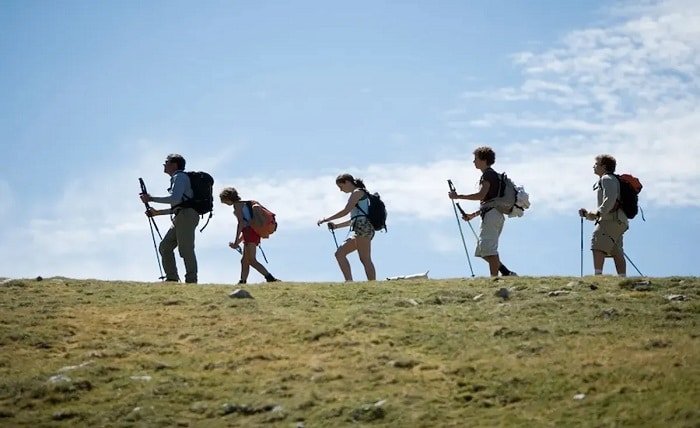BlueFire Wilderness Therapy Deaths: A Closer Look at the Risks and Controversies

Introduction
BlueFire Wilderness Therapy, part of a growing trend of wilderness therapy programs, promises to help troubled teens through outdoor survival and therapy. However, as with any high-risk treatment method, it has not been without controversy. One of the most significant concerns has been the occurrence of BlueFire Wilderness Therapy deaths. While the program is marketed as a life-changing experience designed to help adolescents struggling with mental health and behavioral issues, the tragic deaths linked to wilderness therapy programs have raised serious questions about their safety and effectiveness. In this post, we will explore the incidents surrounding these deaths, the risks involved in wilderness therapy, and what prospective participants and their families should be aware of before enrolling in such programs.
What is Wilderness Therapy and Why It Can Be Dangerous?
Wilderness therapy involves using the natural environment as a means of therapy to help adolescents with behavioral and emotional challenges. Programs like blueFire wilderness Therapy aim to combine outdoor survival activities with therapeutic practices to encourage personal growth. However, the dangers of wilderness therapy cannot be overlooked. BlueFire Wilderness Therapy deaths are a tragic reminder of the inherent risks associated with these programs.
In extreme environments, there are several safety concerns, including dehydration, hypothermia, animal attacks, and inadequate supervision. While many wilderness therapy programs, including BlueFire, have measures in place to ensure safety, accidents do happen. It is important for parents and guardians to understand these risks and consider them carefully before sending their children to such programs.
Case Studies of BlueFire Wilderness Therapy Deaths
Over the years, there have been reports of BlueFire Wilderness Therapy deaths, although the specifics of each incident vary. One of the most publicized cases involved a participant who passed away due to dehydration after being exposed to extreme heat. This incident raised alarm bells within the wilderness therapy community, particularly regarding the supervision and preparedness of the staff running these programs.
Another tragic death occurred when a young participant suffered from a severe allergic reaction that went untreated due to a lack of proper medical supervision. These cases highlight the importance of having qualified medical professionals and emergency response plans in place. The BlueFire Wilderness Therapy deaths that have occurred underscore the critical need for increased scrutiny and regulation of wilderness therapy programs.
Safety Protocols at BlueFire Wilderness Therapy
In response to incidents of BlueFire Wilderness Therapy deaths, the organization has worked to implement more stringent safety protocols. BlueFire claims to have developed a comprehensive risk management system designed to mitigate the risks of extreme weather conditions, medical emergencies, and other safety concerns. The program also utilizes trained wilderness therapy professionals, many of whom have backgrounds in psychology, outdoor survival, and first aid.
However, even with these precautions, the inherent risks of the wilderness cannot be eliminated entirely. It is vital for families to ask about the specific safety measures in place and whether these programs have experienced or fatal incidents in the past. Questions about staff training, supervision levels, and emergency response plans are essential before deciding if a wilderness therapy program is suitable for their child.
Are Wilderness Therapy Programs Properly Regulated?
One of the ongoing issues surrounding wilderness therapy programs, including BlueFire Wilderness Therapy, is the lack of comprehensive regulation. Although many programs are accredited by organizations such as the Outdoor Behavioral Healthcare Council (OBH), the oversight of these programs remains minimal in many states. The absence of consistent national regulation has led to discrepancies in safety protocols, staff qualifications, and emergency preparedness across different wilderness therapy programs.
The issue of BlueFire Wilderness Therapy deaths brings attention to the need for stronger oversight and transparency. Advocates argue that the industry should be more tightly regulated to prevent further deaths and ensure that programs provide safe, effective therapy. Parents should consider whether the program they are evaluating complies with the highest standards of safety and ethics.
The Role of Parents in Wilderness Therapy
Parents play a crucial role in ensuring their child’s safety in wilderness therapy programs like BlueFire. Before enrolling a child in such a program, it is important for parents to conduct thorough research, ask questions about safety protocols, and be fully informed about the potential risks. The tragic blueFire wilderness therapy deaths that have occurred in the past have highlighted the importance of parental advocacy and vigilance.
It is also essential for parents to understand the goals of the program and ensure that they align with their child’s needs. While wilderness therapy can be highly effective for some, it is not suitable for everyone, especially for those with certain medical or mental health conditions. Parents must weigh the potential benefits and risks carefully, making sure their child is an appropriate candidate for this kind of therapy.
What Needs to Change in Wilderness Therapy Programs?
The deaths that have occurred within BlueFire Wilderness Therapy and other similar programs point to the need for change within the wilderness therapy industry. One of the most pressing issues is improving staff training and ensuring that there is adequate medical support available. Another important change is the implementation of stricter regulations to ensure that programs adhere to safety standards and provide effective therapeutic interventions.
Furthermore, programs must prioritize transparency. Families should have access to detailed information about the program’s policies, staff qualifications, and past incidents, including any deaths or serious accidents. The aim should be to provide families with a clear understanding of both the potential benefits and the inherent risks of wilderness therapy.
Conclusion
The deaths linked to BlueFire Wilderness Therapy deaths serve as a sobering reminder of the risks involved in wilderness therapy programs. While these programs offer potential therapeutic benefits for adolescents struggling with various mental health issues, they also come with significant dangers. Families considering wilderness therapy for their children should carefully research the program, ask about safety protocols, and fully understand the risks involved.
Wilderness therapy programs like BlueFire must prioritize safety, staff qualifications, and adequate supervision to ensure that the benefits outweigh the potential dangers. Furthermore, there is a need for stronger regulation and oversight within the wilderness therapy industry to prevent further tragedies. Ultimately, it is crucial for parents to make informed decisions and to advocate for their children’s well-being in all aspects of their treatment.
FAQs
1. How dangerous is BlueFire Wilderness Therapy? While BlueFire Wilderness Therapy offers many benefits, it is not without risks. There have been instances of BlueFire Wilderness Therapy deaths, highlighting the importance of safety protocols and supervision.
2. What are the main causes of deaths in wilderness therapy programs? The main causes of deaths in wilderness therapy programs include dehydration, extreme weather conditions, medical emergencies, and accidents. These factors can lead to tragic outcomes if proper safety measures are not in place.
3. Is BlueFire Wilderness Therapy regulated? Although BlueFire Wilderness Therapy is accredited by the Outdoor Behavioral Healthcare Council, the wilderness therapy industry lacks comprehensive national regulation, leading to variations in safety standards and oversight.
4. How can I ensure my child’s safety in wilderness therapy? To ensure your child’s safety, research the program thoroughly, ask about staff qualifications and safety protocols, and understand the risks involved. Make sure the program has strong medical support and emergency response plans in place.
5. Are there alternatives to wilderness therapy? Yes, there are various therapeutic alternatives to wilderness therapy, including residential treatment centers, outpatient therapy, and therapeutic boarding schools. Each option has its pros and cons, so it’s essential to find the one that best suits your child’s needs.




